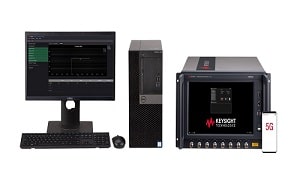Supports release 16 features to 3GPP and accelerates the verification of designs for smart city, smart factory and autonomous vehicles

Keysight Technologies, Inc. has announced that the company’s S8704A Protocol Conformance Toolset was used to submit the first protocol test case for verifying 5G new radio (NR) devices that support release 16 (Rel-16) features to 3GPP.
As a result, device vendors can accelerate the verification of designs that support 3GPP Rel-16 features. Many mobile operators are expected to implement 3GPP Rel-16 capabilities to improve coverage, capacity, latency, security, power consumption, mobility and reliability. Release 16 includes new features that support transportation, private 5G, industrial internet of things (IoT), among other use cases.
“Early availability of 3GPP 5G NR test cases for Rel-16 are needed to speed the realisation of smart city, smart factory and autonomous vehicles,” said Muthu Kumaran, general manager of Keysight’s device validation solutions business. “Keysight continues to demonstrate technical leadership by being first to submit test cases to 3GPP RAN5, a workgroup within 3GPP that is focused on the specification of conformance testing at the radio interface for the user equipment.”
The test case, submitted for verification to 3GPP RAN 5 on August 6, 2021, allows chipset and device vendors to verify functionality related to self-organising networks and the minimisation of drive testing. Keysight’s Protocol Conformance Toolset enables users to verify protocol signalling performance of a design and confirm compliance to 3GPP 5G specifications. This toolset is part of the company’s suite of 5G Network Emulation Solutions, which leverage the company’s UXM 5G Wireless Test Platform to address the device development workflow from early design, to acceptance and manufacturing.
In February 2021, Keysight’s 5G network emulation solutions were also used to establish the industry’s first 5G NR data connection based on 3GPP Rel-16. As the latest 5G NR standard, 3GPP Rel-16 offers advanced capabilities such as support for ultra-reliable and low latency communications (URLLC), unlicensed spectrum, satellite communications, DL-based positioning, power efficiency and integrated access and backhaul (IAB).






